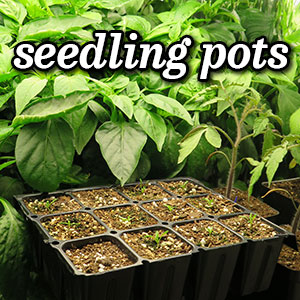Plant Biology: Water and Plant Life!
Water is absolutely essential for plant life. It makes up the majority of a plant's weight (85% to 95% in many cases). Water is a solvent and thus serves as the 'blood stream' of a plant, delivering all of the plant's essential minerals. Additionally, as a plant transpires through its leaves, the escaping water molecules have a cooling effect. This is what helps a plant to withstand hours of direct sunlight.
TURGOR PRESSURE: In many soft tissue plants and herbs, water even provides the very structure which holds the plant upright. Have you ever seen a wilting pepper or tomato? Once these plants are cut off from their water supply, their cells begin to collapse, much like a deflating balloon. Turgor pressure describes the effect that water has on plant cells. As that water fills a cell, it pushes firmly against the cell walls. The leaf and stem tissues become rigid and hold their form. A wilting plant has already begun to suffer serious water stress, often resulting in cellular damage. The effects of water stress can occur quickly, within mere hours!
Why Do Plants Use So Much Water?:
It's important to understand the constant flow of water through a plant. The roots are absorbing mineral enriched water. Meanwhile the leaves have tiny openings (stomas) that are allowing water to escape as vapor. This process is known as transpiration.
TRANSPIRATION: Through transpiration, a plant may lose over 99% of the water it draws up from the soil. The remaining amount is then used in photosynthesis and assimilated by the plant. The water demands may be much more than we would expect. A tomato, for example, may use up to 1/2 gallon of water per day. Or an oak tree can transpire 40,000 gallons of water a year!
Keep in mind that the rate of water consumption changes depending on the size and growth cycle of the plant. In general, the more leaves, the more surface area from which water can escape. External factors come into play as well such as: temperature, relative humidity, wind speed and light levels.
All too often, water becomes the limiting resource in plant growth. This is particularly common with annual vegetable crops. There may be all of the right nutrients in the soil. Sunlight may be plentiful. But without a reliable method for water delivery your plants will not thrive. Food production will be reduced. Let's look at two common approaches for providing water, ensuring that your garden will thrive.

![I Bleed Chlorophyll [Gardening T-Shirt Design]](images/I-Bleed-Chlorophyll-Gardening-T-Shirt-th.jpg)

